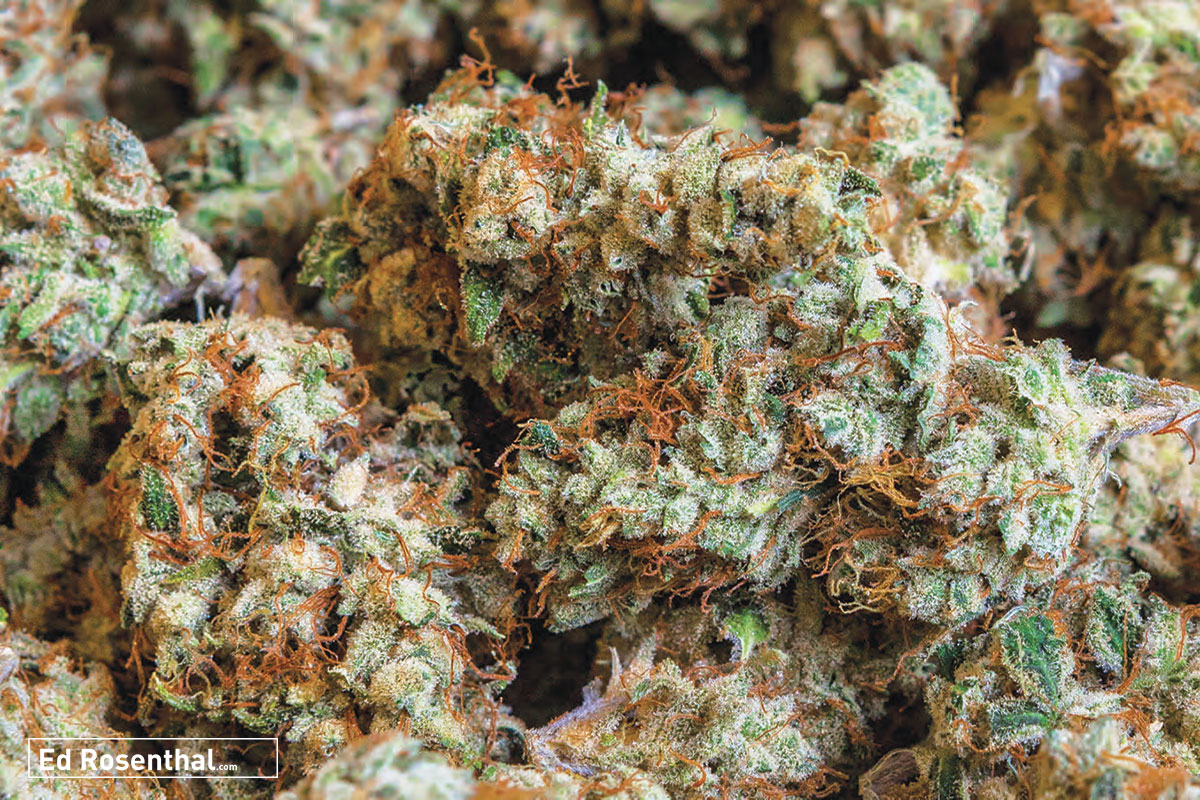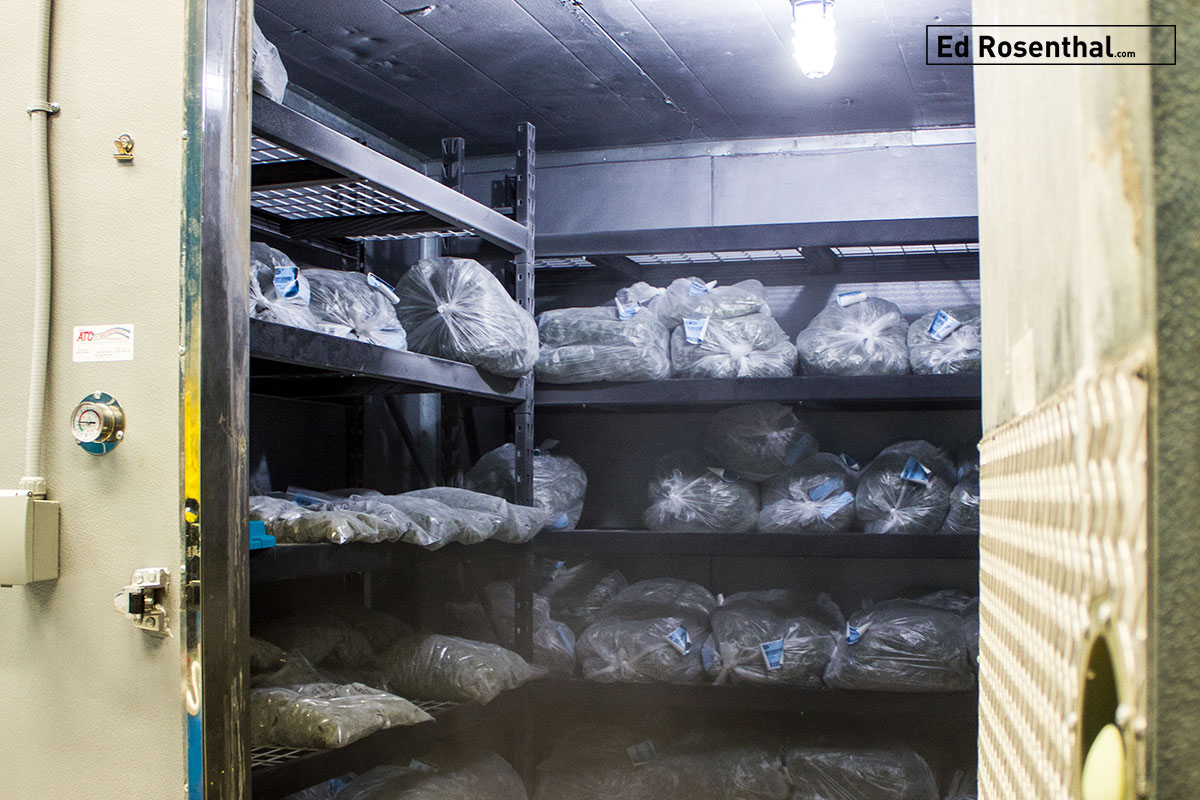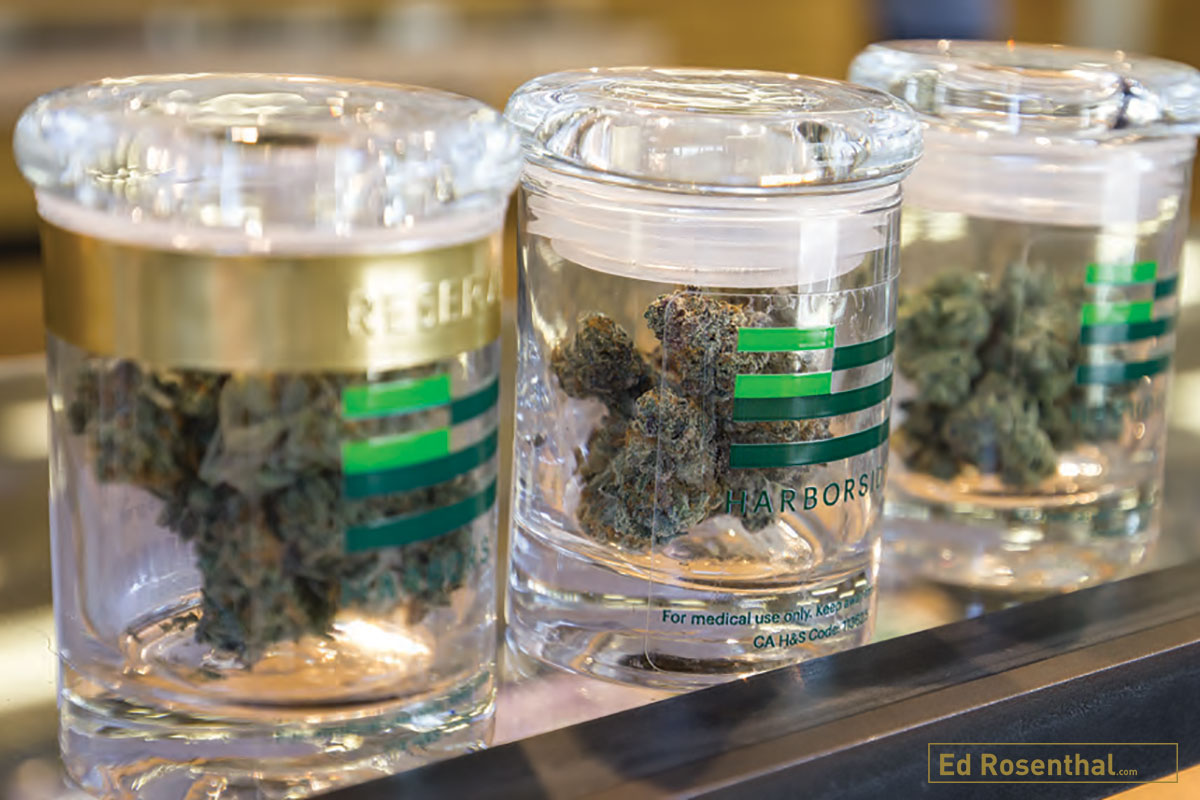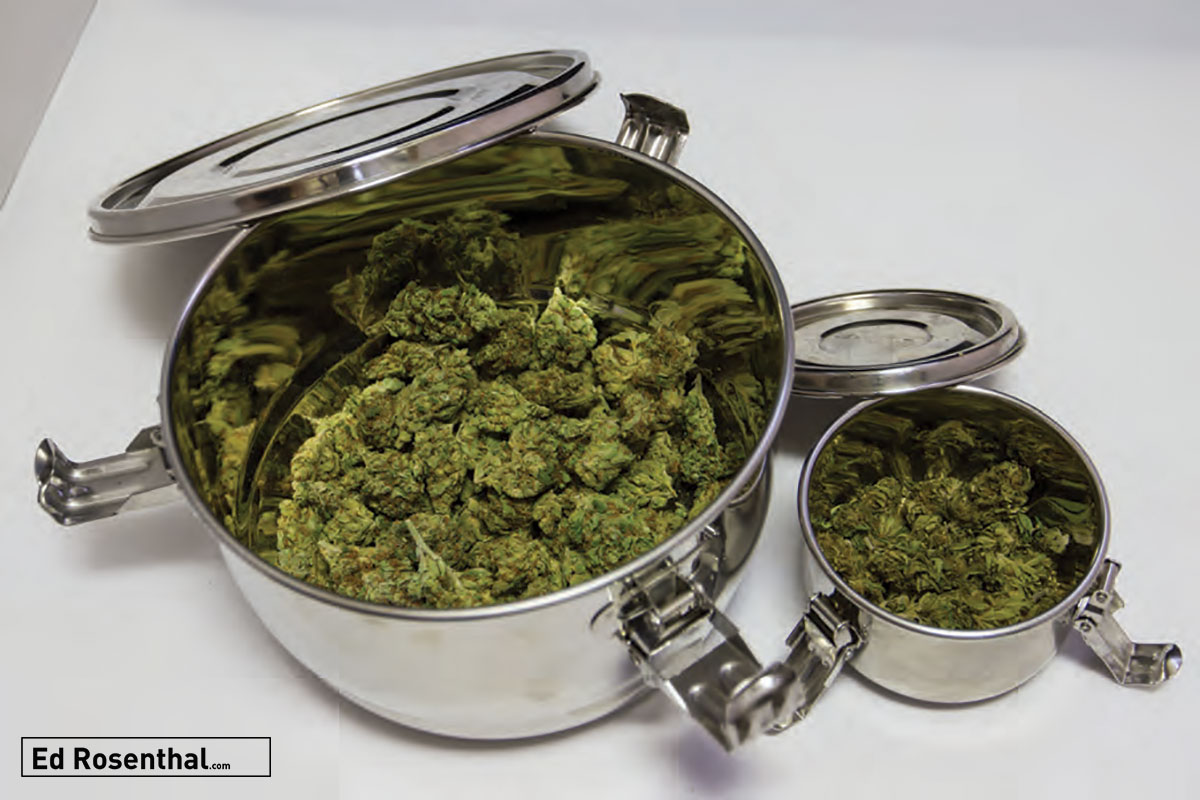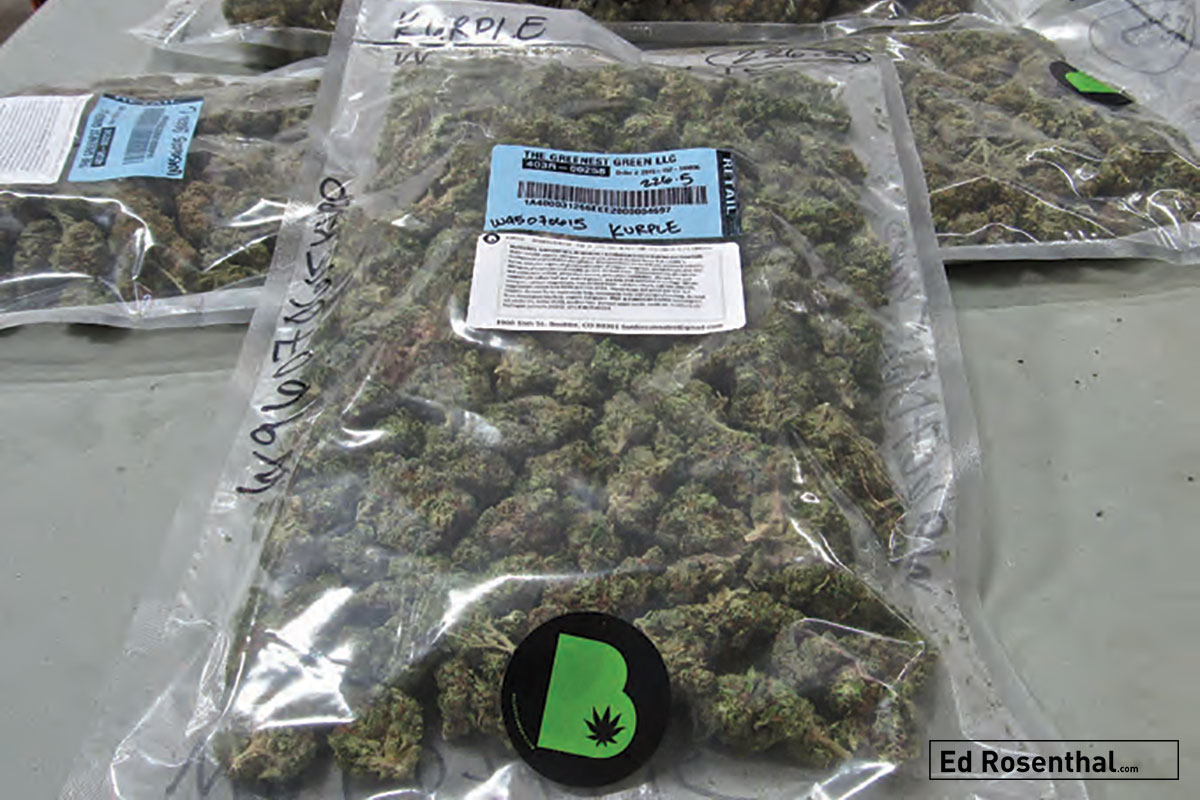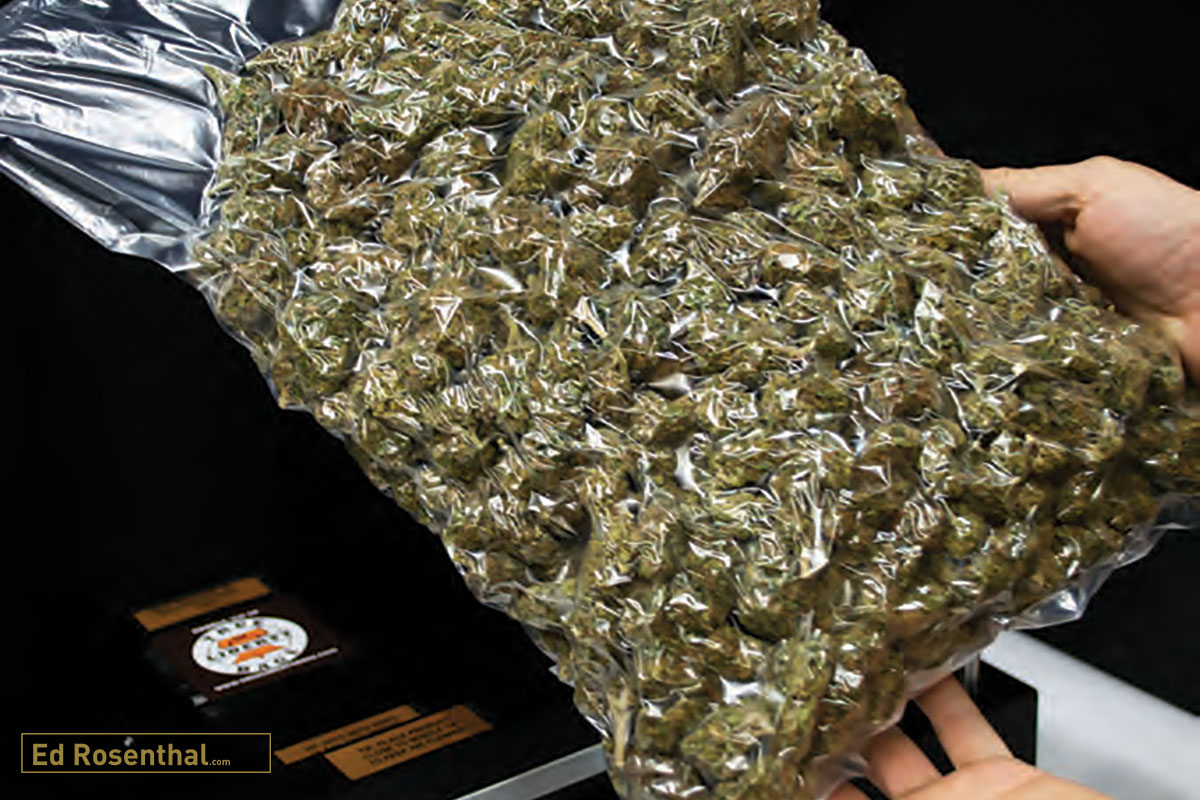How to Properly Store Cannabis
Cannabis quality and potency change over time. In the living plant, the precursors of THC and CBD are found in their acid forms, THCa and CBDa. These are not psychotropic. Only when they lose a portion of their molecules do they become active as THC and CBD. This occurs naturally over time and is accelerated in the presence of heat and light, especially ultraviolet light.
Once buds are dried and cured, potency is at its peak. Over time THC gradually degrades to CBN, a far less psychotropic cannabinoid than THC.
Research conducted at the University of Mississippi on low-quality cannabis stored for four years at room temperature (68-72° [20-22° C]) found that the percentage loss of THC was proportional to time in storage, with the greatest loss in the first year. As the THC level declines, the concentration of CBN increases.
This research is consistent with the experiences of marijuana users. Marijuana loses potency over time as the psychoactive THC converts to CBN, which induces sleep but not highness. Storing buds in the freezer or refrigerator slows deterioration. Freezing keeps buds fresh longest.
However, even in deep freeze THC deteriorates, at nearly 4% a year. In deep freeze (below 0°F) deterioration slows further. At refrigerator temperatures THC deteriorates at the rate of about 5.4% a year. A freezer is best for long-term storage; a refrigerator is good for protecting terpenes in the short term.
There are several problems with storing cannabis in a freezer, especially when supercooled to 0° F (-18° C)
Storage Moisture: Dried buds should be stored in a space or container that maintains a humidity level, ideally, around 60%, or within a range of 58-65%. Image - deep freezer at Harmony Extracts
Even under higher temperatures in the freezer, glands become very brittle and are easily and inadvertently shaken off buds. For that reason, once placed in the freezer the container should be handled very gently and when removed the buds should be given time to warm up so they become more pliable.
The moisture in the container freezes and can form ice crystals, especially during long storage. This may also occur when buds have not been dried sufficiently.
If moisture is a problem, vacuum sealing mostly eliminates it
True Liberty Bags are resistant to cold, heat, grease, oil and water The bags have an excellent aroma barrier that makes for a versatile container.
In several experiments, properly dried marijuana in a plastic container developed no ice crystals when placed in a freezer for several months. The trichomes remained intact. If moisture is a problem, vacuum sealing mostly eliminates it, although the process may result in crushed buds.
Another solution is to remove the air with moisture-free gas such as carbon dioxide or nitrogen. These can be injected into the container as the ambient air exits through another hole. Then both holes are sealed.
When freezing marijuana in glass containers choose shoulder-less containers as shouldered containers are more likely to develop cracks. Metal and wood containers can also be used for freezing.
One way to store frozen marijuana is in small containers. Pack just enough for a week’s use in each container. The rest of the stored material is not disturbed so the glands are not at risk, as they can be removed from the freezer individually.
According to the University of Mississippi study, refrigerator temperatures slow deterioration to a little less than 0.5% a month, which isn’t noticeable when storing for just a few months. Here, too, it is best if the bulk of the stored material is disturbed infrequently.
Heat and light - especially UV light - evaporate terpenes and erode quality
Sweet Tarts - Photo by Devils Lettuce
Only an opaque container will completely protect the terpenes and therefore the quality of the buds stored inside. An opaque container with a white exterior reflects heat, keeping the contents cool. Using a desiccant packet that maintains a set humidity of about 60-65% ensures the proper level of moisture is retained without causing mold.
Terpene molecules vary in size, and the smallest ones evaporate at lower temperatures, starting in the high 60s. Buds kept at room temperature in an open container will experience some loss of terpenes. Storing buds in a refrigerator or freezer keeps terpenes in a liquid state, rather than gassing off.
Materials to use for storing cannabis
Cannabis can be properly stored in a number of different materials, each with pros and cons that make them more or less suitable depending on the grower’s needs.
Glass
Glass makes great, inert, hard, non-biodegradable storage containers. The downside is that most glass jars are clear, and light degrades trichomes— which doesn’t matter if buds are stored in the dark. For storing buds exposed to light, an opaque glass is best.
Different types of glass are used to store food. The color of the glass deter- mines the type of light and heat that can penetrate the barrier.
Top shelf bud stored in glass jars at Harborside Health Center.
Violet Glass
MyPharmJar is a violet glass storage system designed to keep dried herbs and buds fresh and prevent decay for years. The jars include a built-in humidity and temperature sensor to prevent mold and over-drying. The Miron glass prevents most light from penetrating the bottle, protecting quality and potency.
Violet glass blocks visible light with the exception of the color violet. It also is semi-permeable to UV-A, an infrared light, allowing about 40-60% to pene- trate, depending on glass formula and thickness.
Miron Glass, a manufacturer in Germany, claims that this combination of light preserves biological material such as herbs as well as fresh vegetation. They base their claims loosely on bio-photons, which is very weak light emit- ted by all living things. Their literature claims that even when material is dry, the light that penetrates the glass preserves this energy while forming a barrier to other visible spectrums that can cause deterioration of cannabinoids and terpenes.
Placing a glass or stainless steel container in a dark space such as a refrigerator closet or dark room will also keep harmful light out. It is highly unlikely that there is much UVA light indoors, so none is passing through. However, visible light is filtered out.
In a controlled experiment, fresh garden tomatoes were placed in a Miron container, a stainless steel container and a clear glass container. All were sealed and the clear glass container was kept entirely in the dark.
When the jars were opened a month later, the tomatoes were still fresh, if a little dehydrated. The containers were closed again and reopened a month later. All three tomatoes had begun molding at similar rates.
Stainless Steel
Stainless steel CVaults are the choice of many connoisseur growers, retailers and consumers. They’re airtight, lightweight, nonporous, durable and impenetrable to light—the ultimate for storing buds. The bottoms are dishwasher safe, making them easy to clean. Sizes range from the X-Small Personal CVault Curing Storage Container to the 4.4-gallon (17 l) Mega CVault, which holds up to 2 pounds (1 kg) of dried buds.
Stainless steel tubs with plastic seals and flip-top locking mechanisms are popular because they’re strong and can be stacked. The metal does not inter- act with the buds and is impervious to outside air. Stainless steel containers are an excellent choice for storage.
Plastic
For buds destined to be consumed soon, one space-saving solution is to use vacuum-sealed, food-grade Mylar pouches. To keep buds fresh longer, use nitrogen-flushed, sealed medical-grade pouches. Photo by David Downs at Bolder Cannabis.
Cannabis is slightly acidic and lipophilic so it degrades some plastics. Plastics are stickier than glass or stainless steel. Odorless turkey bags are popular because they contain odors and are inexpensive. However, they are easily pierced by stems and offer no protection from shaking and movement, which leads to more damage and shake. Five-gallon buckets sealed with toothed, locking, airtight lids will protect buds from getting crushed and can be stacked.
Desiccants
A desiccant is a substance that removes moisture from the surrounding air. Desiccants are often found in certain food packages, like dried seaweed, and in electronics. Silicon packets, newspaper or anything extra-dry acts as a desiccant and absorbs moisture in a storage container.
Vacuum packaging
Vacuum packaging is popular because it decreases the amount of oxygen present in a storage container. Oxygen is corrosive and degrades the buds’ color. Decreased presence of oxygen also discourages the growth of spoilage bacteria, but not anaerobic bacteria. Anaerobic bacteria thrive in low and no-oxygen environments that are damp and have food—the buds! Never seal and store wet or damp buds.
Gas-based storing
Gas-flushed, sealed Mylar bags are excellent packaging for long-term storage. The process flushes the bag with nitrogen and seals it. Unlike oxygen, nitrogen is inert and doesn’t burn. Purging packages of oxygen extends the life of the buds and prevents growth of mold and discoloration, similar to vacuum sealing.. Gaspurged bags are a cornerstone of consumer food product packaging and are common in snacks like chips and jerky. Some testing labs offer nitrogen bagging services using tamper-proof packaging.
Storing fresh-frozen cannabis
Scrape of sugary wax extract. Photo by David Downs.
Instead of being prepped and dried, marijuana can be made directly into concentrates or stored undried and “wet” frozen to be used later. This saves of energy and labor. With storage, converting the material can be postponed to a more convenient time. Either fresh or frozen buds can be used for bubble, or BHO. First, the chopped buds are brought to near freezing temperature. Then agitation from a paint mixer or other tool makes the glands brittle; they break off and are collected in a series of filters that catch different sized glands. When collected, the glands make hash, which can be used in a vaporizer or pipe or as an intermediate for making butane or CO2 concentrate. BHO extractors use butane as a solvent to decannabinize and deterpenize the leaf. The result is a very pure dabbable concentrate.
Storing Shatter
Live Nectar at Harmony Extracts
Extracts have narrower temperature tolerances. Shatter-type extracts start buddering (clouding over, which decreases value) at a little over 65° F (18° C). Prevent bubble hash from molding by sealing and storing it in a refrigerator or freezer.
Join our cannabis community
Follow Us







